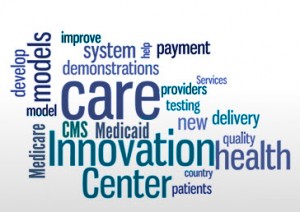 “If you are not confused, you are not paying attention.”
“If you are not confused, you are not paying attention.”
Those are the words of Dr. Steven Landers, Chairman of the Alliance for Home Health Quality and Innovation (AHHQI), who quoted Tom Peters, the business writer and author of In Search of Excellence, at the Alliance’s Symposium last week in Washington, DC.
Landers, who is also the President & CEO of VNA Health Group, was joined by keynote speaker Brian Griffin, President and CEO of Empire BlueCross BlueShield; and over 20 healthcare executives nationwide, including Tracy Lustig, Senior Program Officer with the Institute of Medicine; Bruce Leff, Professor of Medicine at the Johns Hopkins University School of Medicine; and Sam Smith, Vice President of Business Development at Axxess, to discuss the Triple Aim of healthcare, the impediments to home healthcare IT adoption and the challenges of the home healthcare industry and its future.
There are many reasons why the home healthcare industry can be confusing. Most practitioners and executives are grappling with issues related to home healthcare: cost, procedures, regulation and patient outcomes, to name a few. One important aspect of understanding the role of home health under the larger healthcare umbrella is the Triple Aim: improving patient outcomes, reducing cost of care and improving the health of our population. While implementing this lofty goal is no easy task, the industry is ripe for change. With the influence of federal policies (including the Medicare home health benefit), along with the influx of seniors — roughly 10,000 new Medicare eligible adults each day – means there is much work to be done to ensure the system seamlessly works together.
During the past year, the Future of Home Health Care Project, organized by the AHHQI, has focused on these very issues—addressing how home healthcare is currently used, and how it will be used in the future for older adults. As the next step to find answers, the symposium was a daylong event that looked at several different aspects of the home health industry. Discussions included optimizing home health interdisciplinary teams, improving efficiency with technology, key payment and policy reforms and diverse services funded in silos (which result in fragmented care based on what Medicare pays for, not necessarily what patients need).
While much was covered during the symposium, more questions were generated. In most instances, it was agreed that the solutions to areas in home health that need support lie in technology. While technology is playing a critical role in the home health field, the Medicare home health benefit does not currently support these innovative approaches to care. Some states, however, are starting to reimburse for telehealth under Medicaid; but this is merely scratching the surface.
Further efforts to leverage the benefits of technology should include creating standardization in quality measures across the board and advancing interoperability of electronic medical records and electronic health records.
Other areas critical to advancement of home healthcare include:
- Moving from disease states to functionality and frailty to determine the level of care needed and who is at greatest risk for rehospitalization
- Moving from post-acute care to focus on wellness and preventing hospitalizations
- Developing a workforce that understands geriatrics and embraces patient-centered care with the caregiver essential to the plan of care
- Developing specific interventions and protocols for those 5 percent of beneficiaries who generate 50 percent of Medicare costs
- Working as care teams comprised of social workers, physicians, nurses, therapists and family/caregivers with the patient’s goals in mind
Axxess, the platinum sponsor of the Future of Home Health Care Project and member of the Alliance, has been an integral part of the project since its inception. Businesses like Axxess are working to achieve the Triple Aim goals, which will further position home-centered care as the delivery model to reduce costs, improve patient outcomes and improve population health.

